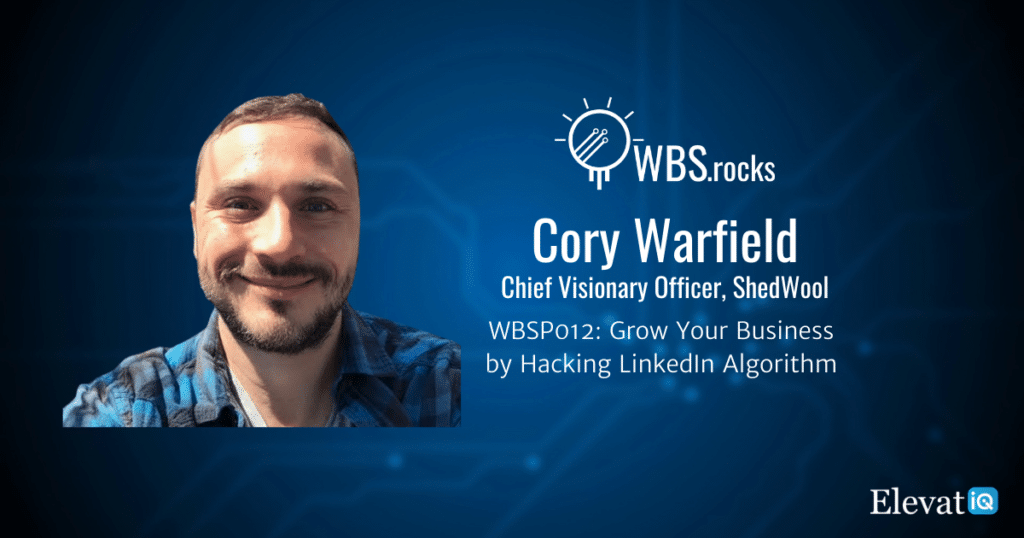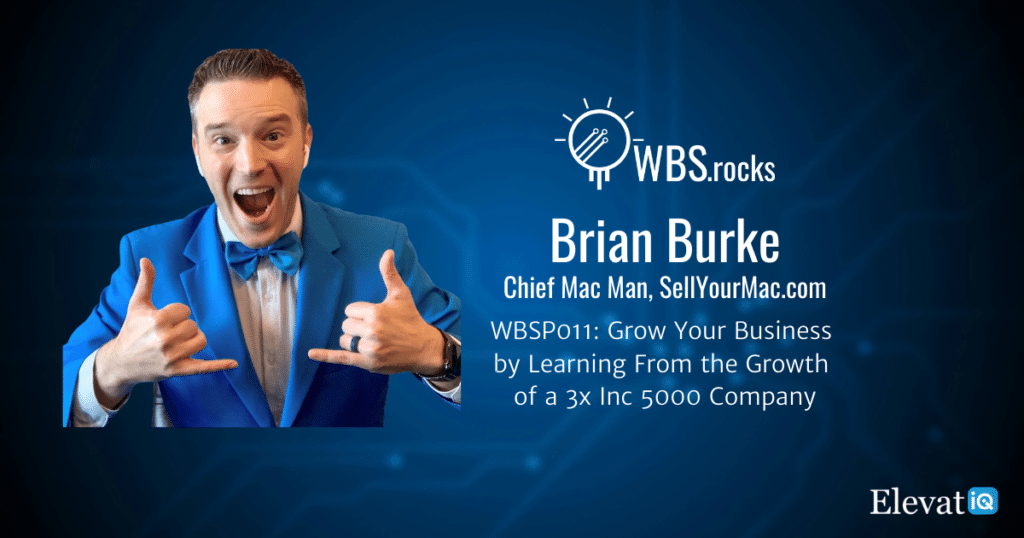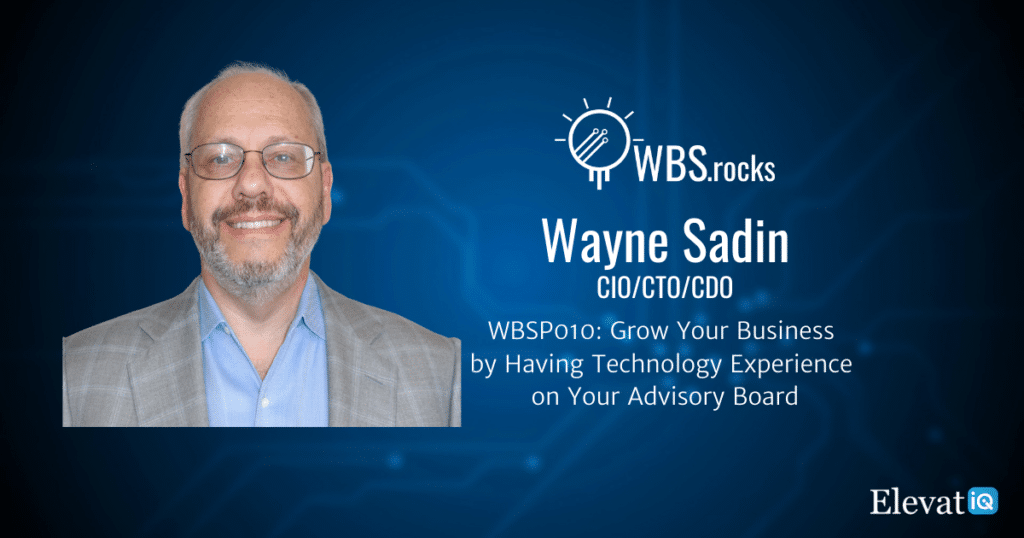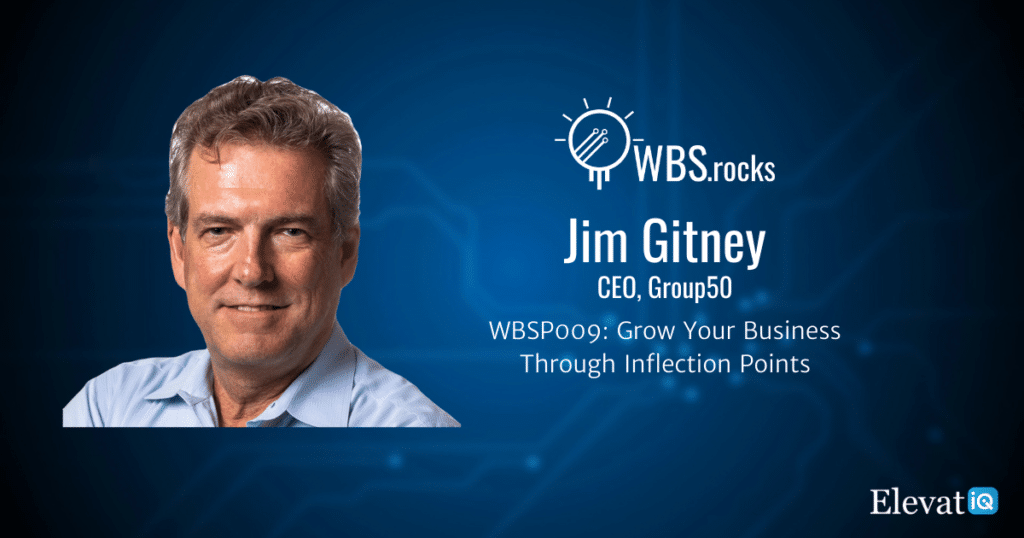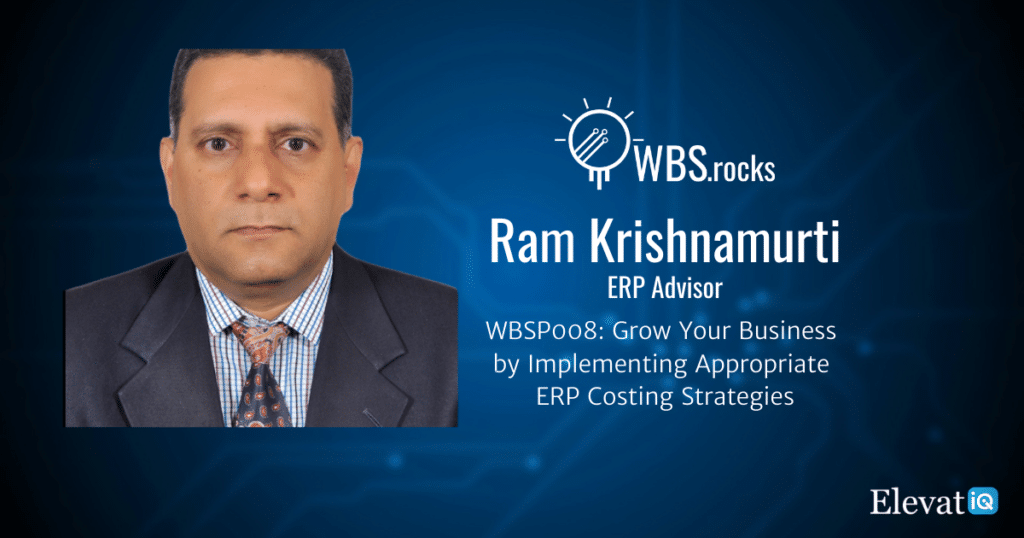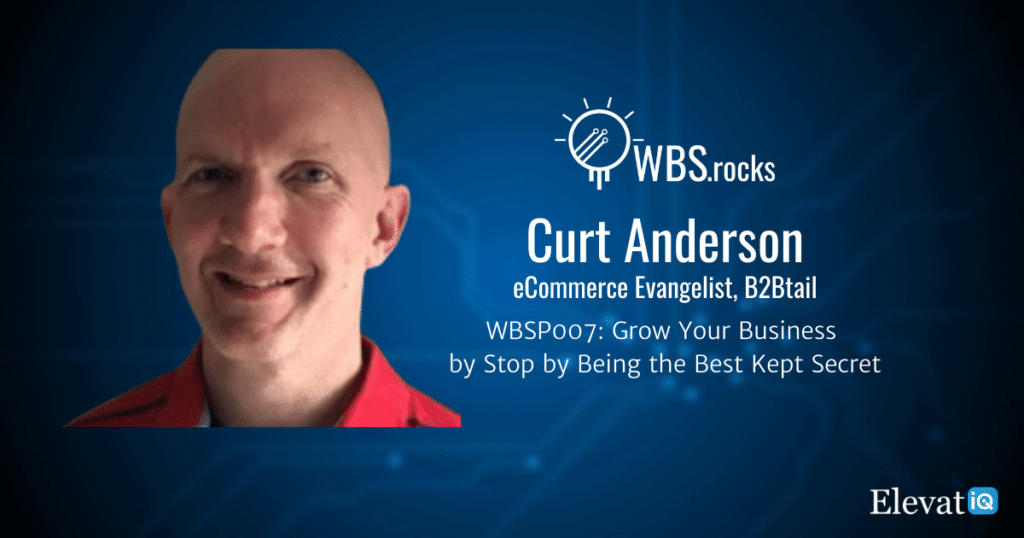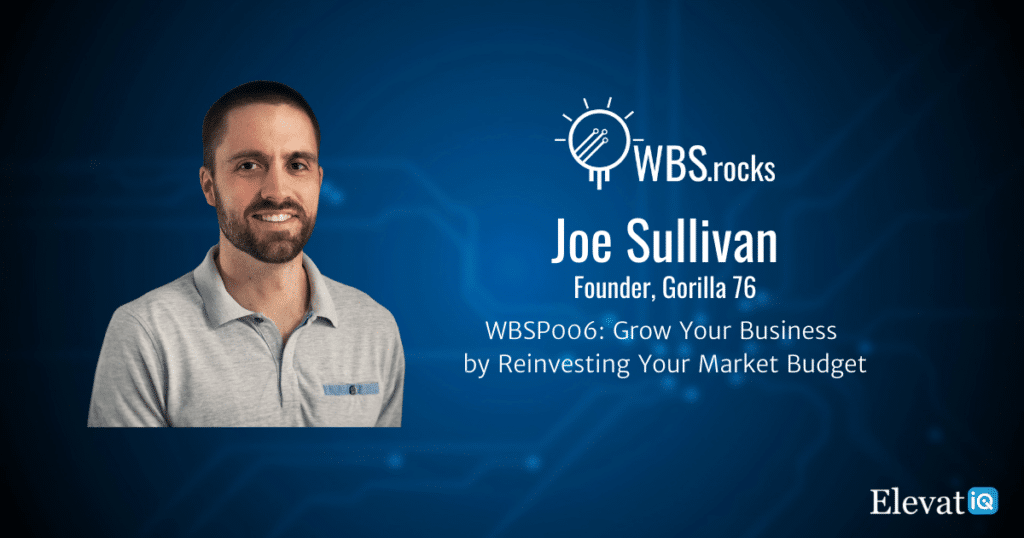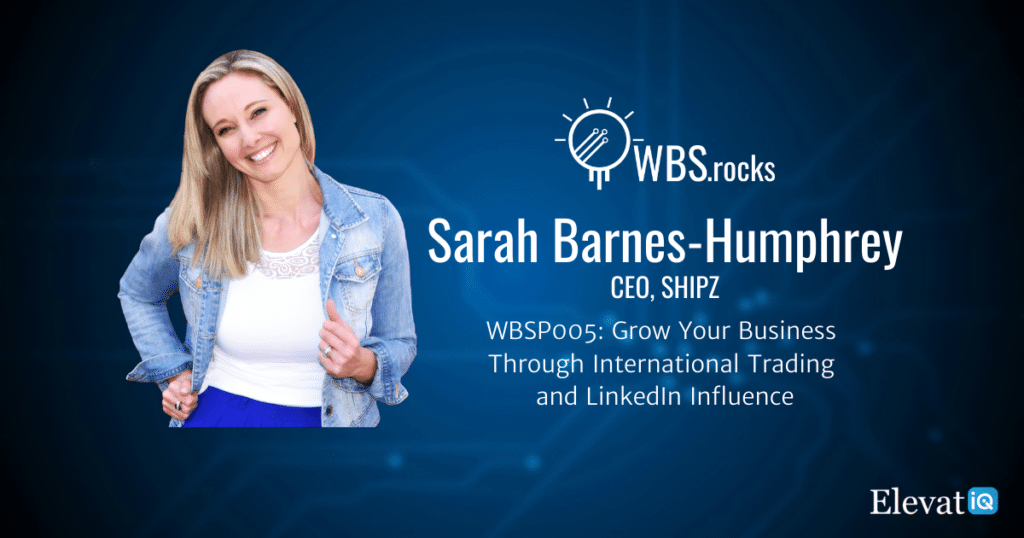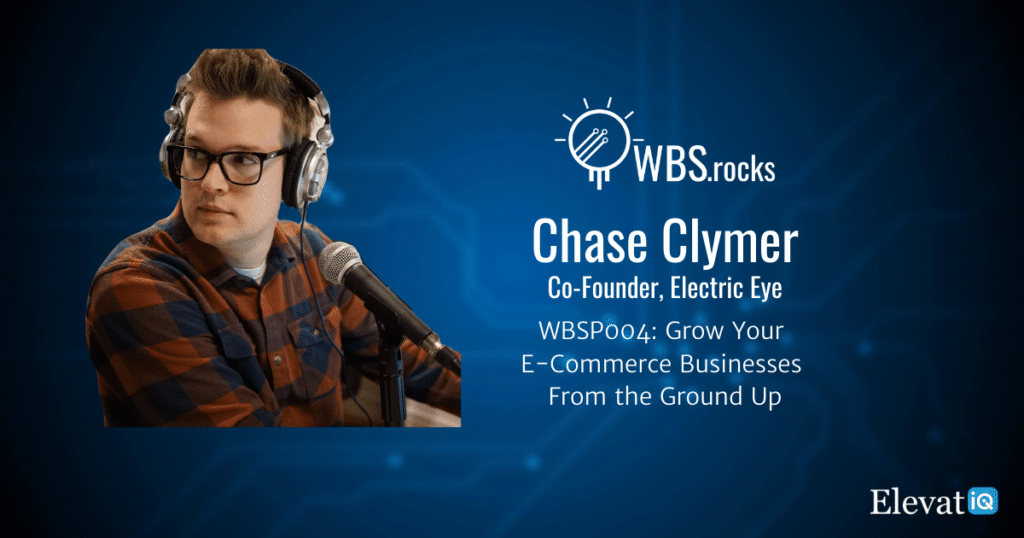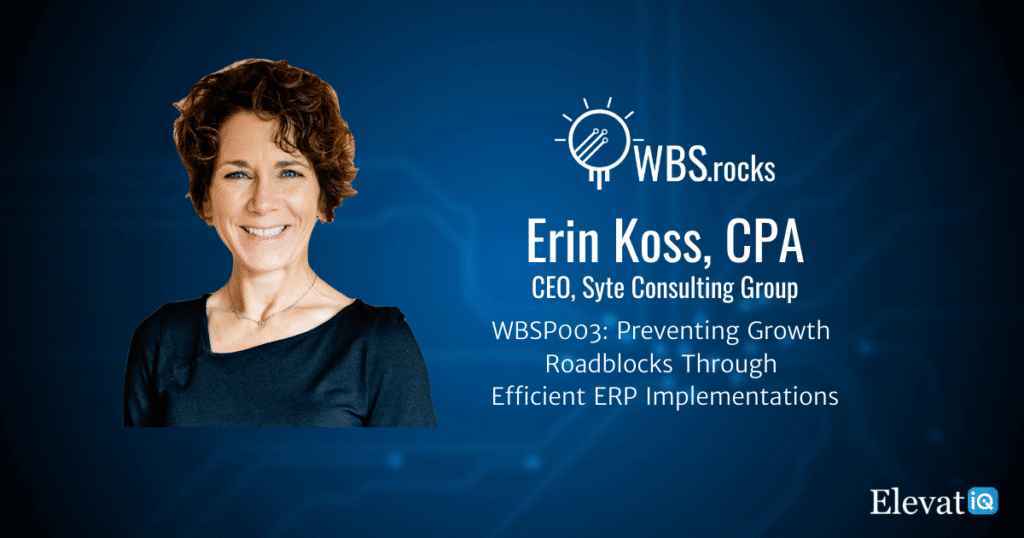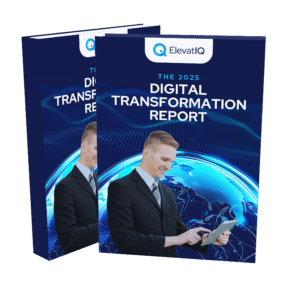WBSP012: Grow Your Business by Hacking LinkedIn Algorithm w/ Cory Warfield
In this episode, we have our guest Cory Warfield from ShedWool, who shares LinkedIn algorithm secrets and discussed how he became a popular LinkedIn Influencer with nearly 250K followers through his authentic content and personality widely admired on LinkedIn.
We also got a chance to discuss what finance and operations executives need to do to start their LinkedIn journey and why it’s important to be present on LinkedIn. Finally, we discussed the nuances of the LinkedIn algorithm and how to create content that will give you high visibility on LinkedIn.
Chapter Markers
- [0:00] Intro
- [3:11] Personal journey and current focus
- [3:41] Perspective on growth
- [4:26] Cory’s LinkedIn journey
- [9:55] Content strategy for LinkedIn posts
- [12:36] Do influencers get higher engagement on LinkedIn?
- [13:26] LinkedIn Three Rings of Engagement
- [18:02] Do Emojis help with engagement on LinkedIn?
- [25:15] How content needs differ between finance and marketing users?
- [27:09] Closing thoughts
- [29:35] Outro
Key Takeaways
- Never pitch on LinkedIn. LinkedIn is meant to be to increase visibility about your brand in order to stay on top of people’s minds.
- Post educational content on LinkedIn to build thought leadership.
- Vanity metrics, as such are a disservice to the poster and the people that are engaging with them to a degree.
- If you love accounting, and if you’re only talking to the other seven people in the world that love accounting, you’re never going to get virality because of the LinkedIn algorithm. But what I would say in those scenarios, is make a little video of yourself.
- Any post that goes viral has reached the third ring of engagement. The first ring of engagement will quite literally only go out to a select number of your first connections. Now, if your post doesn’t do well, with that sample audience, it doesn’t matter. If you have a million followers, that post won’t do well. And if it doesn’t do well, right away, although they’ve begun to change a little bit of the LinkedIn algorithm, and then that kind of once you’ve posted, the way that it performs in that sample audience is very important.
- That second ring is actual employees of LinkedIn that are on the clock. They have algorithmically been pushed content that LinkedIn is now saying to their employees, hey, this seems to be doing well. Do you guys like it?
- If you and I do the same video with the same five words on it. If your network loved that, and mine didn’t, the LinkedIn algorithm could help it go viral. And mine might not even if you have you know, hundreds of 1000s of fewer followers than me.
- The LinkedIn algorithm does not like it when you do the same thing every time. Even I can’t do a GIF every time sometimes I have to switch it to a video sometimes I have to do a video on myself. Sometimes it has to be text only.

Subscribe and Review
Apple | Spotify | Stitcher | Google Podcasts | Deezer | Player FM | Castbox
About Cory
Cory Warfield, the Founder and Chief Visionary Officer of ShedWool, Inc., is an entrepreneur, business leader, mentor, consultant, influencer, and philanthropist.
His work with BTEC, Founder Institute, and Coryconnects has had an impact locally (Chicago) and globally, and he has helped launch and scale more than a dozen companies, serving as a CEO, board member, or advisor to many of them.
His expertise spans physical products, software, and business consulting. Cory is also passionate about the environment, the underprivileged, exploration, and animals.
Resources
- Connect with Cory
- Connect with ShedWool
Full Transcript
Cory Warfield 0:00
That post blew me up I got a couple of 1000 people that followed me that week. I got some great inbound leads. Some friendships were formed in that week just from his post about me.
Intro 0:15
Growing a business requires a holistic approach that extends beyond sales and marketing. This approach needs alignment among people, processes, and technologies. So if you’re a business owner, operations, or finance leader looking to learn growth strategies from your peers and competitors, you’re tuned into the right podcast. Welcome to the WBS podcast where scalable growth using business systems is our number one priority.
Now, here is your host, Sam Gupta.
Sam Gupta 0:52
Hey everyone. Welcome back to another episode of The WBS podcast. I’m Sam Gupta, your host, and principal consultant at digital transformation consulting firm, ElevatIQ.
When it comes to growth, personal branding, and social media play a huge role. While most companies might be present on social media, only a few understand the LinkedIn algorithm, nuances, and have mastery in creating viral posts. Among other social media platforms. LinkedIn is the most powerful when it comes to marketing for B2B brands targeting executives. LinkedIn is also equally powerful for personal branding and positioning yourself as an expert in a given field.
Sam Gupta 1:38
In today’s episode, we have our guest, Cory Warfield from ShedWool, who discusses how he became a popular LinkedIn influencer. With nearly 250,000 followers through his authentic content and personality widely admired on LinkedIn. We also get a chance to discuss what finance and operations executives need to do to start their LinkedIn journey, and why it’s important to be present on LinkedIn. Finally, we discuss the nuances of the LinkedIn algorithm and how to create content that will give you high visibility on LinkedIn.
Let me introduce Cory to you. Cory Warfield, the founder, and Chief Visionary Officer of ShedWool Inc. is an entrepreneur, business leader, mentor, consultant, influencer, and philanthropist. His work with BTC, Founders Institute, and CoryConnects has had an impact locally in Chicago and globally. And he has helped launch more than a dozen companies serving as a team member, board member, or advisor to many of them. His expertise spans physical products, software, and business consulting. Cory is also passionate about the environment, the underprivileged, exploration, and animals.
With that, let’s get to the conversation.
Hey, Cory, welcome to the show.
Cory Warfield 3:08
Thanks so much, Sam. Great to be here.
Sam Gupta 3:11
Hey, thank you so much for joining and finding the time. Obviously, our listeners are super excited to listen to the advice on the LinkedIn algorithm from you. You are extremely influential on LinkedIn. And that’s why we want to dig into every single LinkedIn algorithm secret out there. Okay, but before we do that, do you want to start off with your intro?
Cory Warfield 3:31
For sure. Hi, everybody. Thanks for tuning in. For those that don’t know me, my name is Cory Warfield. I’m a serial entrepreneur, social media influencer, our growth hacker and I’m happy to be here.
Sam Gupta 3:41
Okay. Thanks, Cory. And the next question that we always ask with all of our guests is going to be your perspective on growth. What does growth mean to you, Cory?
Cory Warfield 3:50
So a quote that I love is a growth occurs outside of the comfort zone. And for me, growth doesn’t inherently mean getting bigger in size, getting bigger and volume getting bigger and mass. But for me, growth is the progression or the unfolding towards a goal. So if it’s a human being getting bigger, the growth can be your body getting bigger and more muscular. If it’s trying to learn a new skill or a new concept, it could be intellectual or cerebral. But for me, growth is always just that productive. unfolding towards a goal and typically a goal that is understood.
Sam Gupta 4:26
Okay, so tell us a little bit about your journey on LinkedIn. how it all started, when you recognized the value of LinkedIn. What were the initial challenges when you started? Could you touch on that?
Cory Warfield 4:38
Sure. So I’ve been active on the platform for just over three years, and I decided that for myself as a waiter turned entrepreneur, 20 years in restaurants and then starting a smart scheduling company using mobile apps and web technology to help restaurant staff properly. I understood that I needed to establish myself as a thought leader in the restaurant space and in the Workforce Management space. And there weren’t too many people in LinkedIn that were coming from my industry being the restaurant and hospitality industry.
But there was one lady and I always love to shout her out. She’s become a dear friend. Her name’s Carrie luxon. And she was starting, she owns a number of subways here in Chicago. She was the fifth hire at Potbelly. She helped create their HR department, way back in the day, and now they’re a national sandwich brand.
But she was making these videos and getting so much engagement at the time, not too many people were getting the type of engagement through the LinkedIn algorithm she was which three years later might not sound as high but she was getting 50 likes, 70 likes, 100 likes on her videos.
Cory Warfield 5:36
And she was always talking about how you know how to either run restaurants more effectively, new restaurant tech, anything like that. And so I understood she was my archetype. She owns enough restaurants here in Chicago, that she was a strong six-figure client prospect for me as well.
So I was nobody, I had no followers, I literally probably had less than 100 connections and followers on LinkedIn, I started to engage with her content I got on her radar. And she really liked what I was saying in the comments and supportive as I was being. So I made a rookie mistake.
I went in for the pitch, I said, You know, I love your content, I would love for you to take a look at this company that I’m building and the software that we’ve created, I think it’d be a big value. And I think you can help us get into some of the bigger groups.
She said, Absolutely not.
I don’t like to be pitched on LinkedIn. I don’t touch some of that world. And, you know, the fact that you pitch to me, makes me a little bit less inclined to you know, even be friends with you. So I said, Okay, that was my bad. I said if I never pitched you again, can I still support you? And can we be friends?
She said absolutely.
And these years later, we still have a strong friendship. But so rather than trying to leverage her or to piggyback off of her, I decided to emulate her a little bit.
Cory Warfield 6:53
So I started doing my own similar type of videos. And they were they didn’t do well at all. One of my teams now has gone through and scrutinized my three-year journey on LinkedIn and they pull up some posts from back then Sam that literally still to this day, I have zero like three likes 18 views, 100 views, and because I’m resilient and because I’m a very patient person, and because I had decided after reading Gabriel Weinberg’s book tracks, and this was where I needed to really show up and blow up.
I just kept at it.
And I kept that up for about a month with no traction, my videos got no likes, no comments, no views, but I still kept making them. And although Carrie Luxon had encouraged me to do it, I wasn’t getting engagement from her. But about the second month, then some of those videos started to do fairly well back then 10 likes 15 likes, you know, a couple 100 views. And I started understanding the LinkedIn algorithm slightly, getting people that were sending me connection requests every day.
Cory Warfield 7:50
So I realized I was onto something. People started really mentioning that they loved my authenticity because I wasn’t putting on any pretenses. I was never being salesy. I was only showing up, either offer my perspectives and ask people, there’s why we’re showing up to be either fun or supportive. And, you know, I never tried to let perfection be the enemy of progress. I never took things too seriously. I was just logging on every day and finding people that I thought could either teach me something by me watching them and I would support them or people that I thought were prospects, I began to really slow play.
So I had to start to show them, love, engage with their posts, and that I never pitched, anybody. And I’d say probably six months later, my post started doing very well. And I had started adopting a LinkedIn algorithm strategy of finding targeted influencers around the world with at least a six-figure following and showing them a lot of love on the platform.
Cory Warfield 8:43
And it took a month or two of that before some of them started showing love back and so some of them at the time had you know, half a million followers 700,000 followers, they started engaging with all my posts and they started blowing up 300 likes, 500 likes then one of them Rob famous guy he did a post about me he literally did a post he said I don’t understand how some of you have millions of followers and you’re only getting a couple 100 likes per post.
My friend Cory only has 8000 followers and the guy’s getting 1000 likes on some of his posts. And that post blew me up I got a couple of 1000 people that followed me that week I got some great inbound leads some friendships are formed in that week just from his post about me and so you know, I always showed him love found some other people and I’ve really been able to attach my name to bigger and bigger names and on these podcasts, I’ve learned that it’s less beneficial and people don’t care as much for the name dropping with some of these are names of people I’ve been respecting and looking up to for years, if not decades, and they became fans of mine pretty quickly once I just figured out how to show up authentically how to show up intentionally and how to not push people away.
Sam Gupta 9:55
Okay, amazing. So let’s say if I have a Finance Or the operations manager, those are our audience. And typically, we used to joke in the accounting class, okay? That there is nothing fun about accounting. So let’s say if I do accounting for, for business, and for fun as well, I love accounting, but nobody else is going to love anything about accounting.
So let’s say if I want to make my presence on social media, and I want to create similar viral posts, using accounting as a subject, what would be your advice? What would be the niche that I should be picking on? In terms of the content, the subject of the content? And number two: Should I be focusing on something else that is going to get far more likes than, you know, doing what I’m doing for my profession?
Cory Warfield 10:46
Well, so I always say that followers, views likes, they don’t pay any bills, they don’t make payroll, they don’t pay the mortgage. Right. So vanity metrics, as such are a disservice to the poster and the people that are engaging with them to a degree.
However, I find so many people on LinkedIn are simply preaching to the choir, if you love accounting, and if you’re only talking to the other seven people in the world that love accounting, you’re never going to get any other virality. But what I would say in those scenarios, is make a little video of yourself. So people can look in your eyes, hear your voice, and get to know you, or find a cute little video that people are going to resonate with and say something along the lines of, I might be the only person in the world that loves accounting.
Cory Warfield 11:31
However, I’ve been seeing a lot of people lately talk about getting leads through LinkedIn. And I’m very curious if I can’t get an accounting link, an accounting lead through LinkedIn. So I’m going to try something different today. Please drop a comment with what you do, what goods or services you’re selling. And I’ll see if I know anybody that I can, that I can provide for you as an inbound lead because I really appreciate all of you guys.
And that’s it. I guess what some of those people are going to do, they’re going to comment with leads that you need to know, hey, this person is just saying they needed a CFO, this person was just saying they needed a tax accountant. And it’s how people start to come in, lean into you because you didn’t push them away. And I do think that probably 70 something percent of people on LinkedIn are pushing most people away, accidentally. So it’s not preaching to the choir, it’s casting a very wide net, it’s letting people that care about what you actually care about that you’ve cheesed, lean into you. I don’t know if that resonates with you, or anybody listening. But for me, I find that that’s very unique. And it’s very powerful on LinkedIn.
Sam Gupta 12:36
So that’s a good way of thinking about it. In fact, I mean, I have seen a lot of different posts and a lot of different influencers, who are actually posting that content.
Typically my understanding of the LinkedIn platform, the way people are commenting and posting, they like to go after the highest commented or highest engaged post because obviously, they are looking for ROI as well of their time, whatever time they are spending, they want to make sure that they are, they are commenting on the highest light, highest engaged polls, so they get the maximum visibility, the same thing is done by the LinkedIn algorithm as well, a LinkedIn algorithm like to put the post on top, which is going to be the highest engagement.
So let’s say Cory if you are posting the samples, and I’m posting the same post, obviously, you are going to get a lot more attention.
Cory Warfield 13:23
That’s not true.
Sam Gupta 13:25
And why is that?
Cory Warfield 13:26
Are you familiar with the three rings of engagement on LinkedIn? No. Oh, It surprises me that you’re not. And it blows my mind how few people are but so LinkedIn has what they call three rings of engagement. It’s an internal ESOP. And so any post that goes viral has reached the third ring of engagement.
But I’ll tell you what the first two are, the first ring of engagement will quite literally only go out to a select number of your first connections. If you have a lot of followers that you’re not connected to them, they probably second connections, but they might see it as well, because they follow you, but they’re only putting it out to a small sample size of your core audience.
Cory Warfield 14:08
Now, if your post doesn’t do well, with that sample audience, it doesn’t matter. If you have a million followers, that post won’t do well. And if it doesn’t do well, right away, although they’ve begun to change a little bit of the LinkedIn algorithm, and then that kind of once you’ve posted, the way that it performs in that sample audience is very important.
If it performs well, if they share it to 100 people and 30 of them like your posts or if they give you 100 views and 20 people comment on that post. The LinkedIn algorithm picks that up as being relevant to a small audience and it then boosts the second ring of engagement. That second ring is actual employees of LinkedIn that are on the clock. They have algorithmically been pushed content that LinkedIn is now saying to their employees, hey, this seems to be doing well. Do you guys like it? That’s it now.
So to your point with accounting, if they put it through to 20 employees, and none of them like accounting, that post is done.
Cory Warfield 15:10
And it’s not even a bias, it’s asking them if they think this post is relevant. If this post is going to do well because if they think yes, this post is amazing, it makes it to the third ring of engagement. And that ring is the actual second and third connections and all of your followers, any post that you see get 5,000, 10,000, 100,000 views, it’s because they open up the floodgates that posts algorithmically using the computer science that they initially set up and that they continue to monitor that said, Okay, this person’s inner circle likes this. And they even using the SSI scoring and things like that, we’ll see if it’s the relevant people what title they are all that, but this is resonating with people, so it’s worth putting it through to our people.
Now someone like some of my friends with millions of followers, their posts will always go to the third ring and engagement always though it doesn’t matter. But it’s because they’ve cracked the code. And because these people, it’ll still quickly go through the three rings. But it’s known if they’re Bridgette’s posts, millions of people want to see that post.
Cory Warfield 16:13
So the second ring, they’re not going to scrutinize so much, then there are things the LinkedIn algorithm was most people are helping job seekers, it helps them It loves when recruiters are giving people ways that they can actually use the ATMs or something like that more to their advantage because that’s part of LinkedIn business model.
But so that’s the thing. And so it could very well be if you and I do the same video with the same five words on it. If your network loved that, and mine didn’t, your posts could actually go viral. And mine might not even if you have you know, hundreds of 1000s of fewer followers than me. It also could be if we both posted at the same time, you’re in a different timezone than I am. And maybe you know, that’s why I always post very early in the morning and very late at night, I’d like to I have a lot of reasons for that we don’t have time to get into.
Cory Warfield 16:59
But there are a lot of variables. And so people that are always going viral have figured that out the LinkedIn algorithm, they know what time to post, they know what the second ring likes, I hate to tell you this, and anybody listening, but that second ring, they love short, fun, funny videos, it can be just it can be but they love it every time.
And if it’s a long video, they don’t have time to watch it. So it’s almost never gonna make it through. The only way around that is the LinkedIn live, which escalates because they don’t have time to fully scrutinize it. So you know, that’s why they typically get low views, but higher engagement, and other LinkedIn stories as well, which I find almost instantly go through the second and third connections, I think they’re really trying to figure out the LinkedIn algorithm is a pertains to stories, but so that might be a little bit more insight on how you can kind of game the LinkedIn algorithm is you have to actually cater to the real LinkedIn employees and understand what it is that they like.
And the way to do that is by studying what else is going viral because any viral posts by anybody on there have passed through that secondary of engagement successfully.
Sam Gupta 18:02
Interesting. And do you have any perspective in terms of, you know, some of the content that I am noticing these days? And that’s been a tradition as well, everybody’s trying to sort of inducing the fear using the emojis. Or they are trying to grab the attention. Do you have any perspective on that? why people do that and why everybody is sort of engaging with that content?
Cory Warfield 18:25
Yeah, so there are people who put emojis in their names. I think that looks very sloppy, juvenile, and unprofessional, I find that people with the images and their names typically are getting very scattered, fragmented, and a strategic engagement. None of them are prospects, nobody’s leaning into what they do professionally in the comments.
But I find some people use emojis in the content of their posts very successfully. I spent about a year using emojis fairly regularly. But what I would do is I would A/B test them. And it used to be that if you did every one of your posts with an emoji none of them would do well. If you did a third to almost half of your posts with emoji and half, not the ones that had emojis that actually outperformed the ones that didn’t with the LinkedIn algorithm needs variation. It doesn’t like the same thing over and over and over.
But what I found is to A/B test the LinkedIn algorithm almost daily on LinkedIn as far as performance, and what I’ve noticed is in the last year, this calendar year, posts with emojis have been doing less and less well. And I’ve tested it a few times myself, I’ve done the same post with or without emojis, same date, same time, one week apart. That should be very similar, very similar performance, the ones that the emojis were about 60 to 70% down on views and engagement.
Cory Warfield 19:42
So my testing, at least for me in my network at this point is that the emojis are hurting posts. Now. Again, for anybody that has different experiences, it doesn’t bother me, I’d love to engage with hosts with emojis as well. I think it makes it a little bit light-hearted, a little bit fun, although maybe a little less professional. I’ve had clients that have their emojis in their names before the super long names with 30 words after their name.
And first of all, it’s not branding and annoys people, it looks very juvenile, but the long names as well where they put all of their qualifications or a tagline in their name. If someone tries to tag them in the content in the content, they only have 1600 characters, that person’s name now might be 100 characters, that’s a 16th of your entire post, right? Just trying to tag this person. And with the emojis. If someone has emojis in their name, I either don’t tag them or I delete the emojis out because I don’t like how that looks. It makes me look juvenile.
So I don’t know, maybe that gives some insights. But I do see the post with emojis still performing pretty well, typically.
Sam Gupta 20:42
Yeah, that’s an interesting perspective. In fact, I have been thinking about that a lot, too, to be honest. Okay, and I like to analyze things myself. Okay, so initially, I never appreciated emojis, especially on LinkedIn, just because it’s supposed to be more of a professional network. It was very hard for me, I’m slightly on the older side, to be honest, in terms of age, so it was harder for me to read as well. And sometimes these guys like Brian Burke would use emojis. And I would not even understand what they’re talking about.
Because they were talking in the language of emoji. It was very hard for me to understand. But then I started using emojis. And I have a little perspective on that. And it has actually helped me because it actually helps with the reading. It helps with the engagement.
Imagine, let’s say if you have had a website that did not have any images whatsoever. The only thing it had is the wall of text, so it would be very hard to read. So emojis actually serve the same purpose psychologically. In breaking the text. That’s my perspective. I don’t know what you would say to that.
Cory Warfield 21:46
So I might tell you that I will say a few things. The first is that emojis actually take two characters, rather than one. So instead of having 16 characters, you only have 8. A lot of times and anymore, my posts are just silly, light-hearted. And I spend maybe less than an hour on LinkedIn these days, I used to spend about 12 to 14 hours a day on LinkedIn, and my posts were all high and people used to love them.
I’d won awards for some of my posts. They’re all very cerebral, very intellectual, very on-trend. And I would, I would put emojis in some of them as well. But for me, that the quality and caliber of people that are engaging with those, it’s a little bit lower. I was using all 16 characters to write value add. So if I only had 8, it wouldn’t have been worth me even crafting such, what I consider to be an intelligent post at the time. And not only that, I can tell you, I had a few people, including a global executive of many billion-dollar companies. He’s become a bit of a friend of mine, he had actually reached out and said, Cory, I’m going to stay connected to you, I’m going to stop following you because your content annoys me.
Cory Warfield 22:53
And I said, Okay, I just need to know what it is that annoys you because I maybe it’s annoying some other people. And I don’t want to be pushing people away. I appreciate you’re letting me know. And I, you know, I could probably find this somewhere in my message history. He told me what he didn’t like about my posts and saw the emojis and made it look like I was an amateur.
And from that moment, I stopped I said I don’t need all the views or all the lights. If a person like this person doesn’t even want to see my content. Now they would be a multi-million dollar account for me if they signed the restaurant group with their three brands under my company. I couldn’t risk losing a million-dollar opportunity for a couple of silly emojis. And since I’ve stopped using them I’ve had I don’t know how many but some you know, more than a couple of people actually tell me that they like my content better now that there aren’t emojis.
Cory Warfield 23:46
So for myself personally, I tend to lean towards not using emojis anymore. I certainly don’t I have coaching clients that I work with growth clients that use emojis and love them. And they get really upset when they hear that I’m not a big fan, I say listen, AB test your posts with or without them. And if they do even better with them, then you’re onto something and your audience is different than mine.
However, no matter what if someone loves emojis, I would encourage them to do a split test and A/B test. Do some posts with it and do some posts without it. See if all those posts do better than do a bunch. I can almost guarantee and put my money where my mouth is that people that use emojis every time are going to see lower engagement, lower views, and lower engagement on all of their content.
And it’s because the LinkedIn algorithm does not like it when you do the same thing every time. Even I can’t do a GIF every time sometimes I have to switch it to a video sometimes I have to do a video on myself. Sometimes it has to be text only. I’ll put an emoji sometimes at the very end of my posts. I’ll do a piece of emoji and a love emoji for peace and love. People seem to like that sometimes. So I don’t do that every time either. And again, that’s sometimes just to test the performance of those emojis. But I found that there may be only slightly that negative but for me, they’re not negative,
Sam Gupta 25:15
Interesting, very interesting perspective. And, in fact, I don’t know if this is going to be really the difference in the background. And I don’t know, whether this executive was had an operations background or the marketing background. So typically, when I talk to marketing folks or sales folks, they are slightly more expressive the way they talk. They always have been. If you talk to finance and operations, people like my audience, they are slightly more reserved, they are not as expressive.
So obviously, they are not going to appreciate I would say, as many emojis just because of the kind of, you know, the community they hang out with. And obviously, they want to be considered seriously in their community, otherwise, they’ll not be able to hang out with them. And nobody wants to lose their connections or friends, because of one silly emoji or a post on LinkedIn. Right?
So do you have any perspective in terms of let’s say, if you’re targeting the sales folks, or marketing folks versus the operations of finance folks, then maybe your content strategy should be different, right?
Cory Warfield 26:14
Absolutely. And everyone needs to have a strategy that they’re executing on. And I think you’re absolutely right sales and marketing, typically, or younger people typically are a little bit more, more open to risk. So the emotions are risky, inherently, on the fun, whimsical nature of them does lend better to sales and marketing, the executive that I’m talking about absolutely, as a finance and ops guy, and a lot of my target areas as well.
And he was I think he was the youngest CEO of a billion-dollar national restaurant brand. And now he’s CEO of his he owns many restaurant brands, and they’re crushing. I mean, they’re there, I think, on their stakeholder call. I think they said they had $7 billion free cash on hand, which is incredible for a restaurant group. So you know, that’s why they’re a target of mine. But yeah, absolutely. He is not a sales or marketing guy.
Sam Gupta 27:09
Yeah, I know, I know, I can tell you that. I mean, you know, because the community they hang out in, it’s different. So if you had the sales and marketing executive, then your experience is probably going to be different.
So that’s pretty much it for today. I don’t know if you have any other advice? Or any closing thoughts, Cory, before we close?
Cory Warfield 27:30
Yeah, Sam, I’ll just speak to the one thing you just said. And that’s it. You don’t have as many followers as someone like me. And the one thing I want anybody listening to this, including yourself to remember is, I didn’t use to have as many followers as I have, either. And nothing has changed. I just split testing the A/B test to make sure that I can continue to grow.
But it’s the same Cory that was when I had 500 followers when I had 5000 followers when I had 100,000 followers when I broke 200,000 followers and my content, my persona, my approach to myself will be the same even when I have a million followers.
So, you know, it’s easy to get caught up on the metrics sometimes. But I think the best thing anybody can do is keep it real, be authentic, and just be here to support one another and growth will happen organically.
Sam Gupta 28:12
Okay, amazing. Thank you so much, Cory, for your time. Really appreciate your advice and insight.
Cory Warfield 28:19
Absolutely. It’s a pleasure. Nice, nice talking with you, Sam.
Sam Gupta 28:22
I cannot thank our guests enough for coming on the show for sharing their knowledge and journey. I always pick up learnings from our guests, and hopefully, you learn something new today. If you want to learn more about Cory, please visit CoryConnects.com. Links and more information will also be available in the show notes.
If anything in this podcast resonated with you and your business. You might want to check other related episodes, including the interview with Sarah Barnes-Humphrey from Shipz, who touches on why LinkedIn is essential for personal branding and community development. Also, the interview with Joe Sullivan, from Gorilla76, who touches on different aspects of social media, and marketing, and why marketing organizations need to be reinvented with COVID-19.
Also, don’t forget to subscribe and spread the word among folks with similar backgrounds. If you have any questions or comments about the show, please review and rate us on your favorite podcasting platform or DM me on any social channels. I’ll try my best to respond personally and make sure you get out.
Thank you, and I hope to catch you on the next episode.
Outro 29:35
Thank you for listening to another episode of The WBS podcast. Be sure to subscribe on your favorite podcasting platform so you never miss an episode. For more information on growth strategies for SMBs using ERP and digital transformation, check out our community at wbs.rocks. We’ll see you next time.

